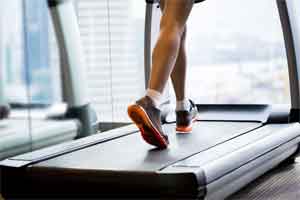- Home
- Editorial
- News
- Practice Guidelines
- Anesthesiology Guidelines
- Cancer Guidelines
- Cardiac Sciences Guidelines
- Critical Care Guidelines
- Dentistry Guidelines
- Dermatology Guidelines
- Diabetes and Endo Guidelines
- Diagnostics Guidelines
- ENT Guidelines
- Featured Practice Guidelines
- Gastroenterology Guidelines
- Geriatrics Guidelines
- Medicine Guidelines
- Nephrology Guidelines
- Neurosciences Guidelines
- Obs and Gynae Guidelines
- Ophthalmology Guidelines
- Orthopaedics Guidelines
- Paediatrics Guidelines
- Psychiatry Guidelines
- Pulmonology Guidelines
- Radiology Guidelines
- Surgery Guidelines
- Urology Guidelines
Sustained or Sporadic Exercise Offers equal mortality benefit

There has been a lot of confusion prevailing about the type of exercise, Quantum of exercise for decreasing mortality risk in CHD. For decades, Americans have been inundated with a confusing barrage of messages about how best to counteract the health risks of sedentary lifestyles: walk 10,000 steps a day; do a seven-minute workout from a phone app; flip heavy tires in an arduous boot camp class.New research data shows that all moderate or vigorous activity -- even when done in short bursts throughout the day -- can reduce Americans' risk of disease and death, according to new research.It infers that any and all of those tactics -- even when done in short bursts throughout the day -- could work to reduce Americans’ risk of disease and death.The findings of the research have appeared in the Journal of the American Heart Association.
“For about 30 years, guidelines have suggested that moderate-to-vigorous activity could provide health benefits, but only if you sustained the activity for 10 minutes or more,” said study author and distinguished professor William E. Kraus, M.D., of the Duke University School of Medicine. “That flies in the face of public health recommendations, like taking the stairs instead of the elevator, and parking farther from your destination. Those don’t take 10 minutes, so why were they recommended?”
Kraus’s study found that even brief trips up and down stairs would count toward accumulated exercise minutes and reducing health risks so long as the intensity reaches a moderate or vigorous level. Moderate exertion was defined as brisk walking at a pace that makes it hard to carry a conversation. Boosting that pace to a jog would be vigorous exercise for most people, he said.
The study findings are good news for most Americans, Kraus said, because they typically get their moderate or vigorous exercise in short bouts, and accumulating 30 minutes per day may be more convenient than setting a half-hour block.
Current guidelines, issued in 2008 by the U.S. Department of Health and Human Services, recommend at least 150 minutes of moderate exercise or 75 minutes of vigorous activity per week, ideally spread out over several days, Kraus said. Updated guidelines are expected to be released later this year.
For the study, Kraus and investigators from the National Cancer Institute analyzed data from 4,840 people 40 and older who participated in the National Health and Nutrition Examination Survey between 2003 and 2006. Participants wore accelerometers to quantify their physical activity and exertion. Using a national database, the researchers determined 4,140 participants were still living in 2011.
The most dramatic improvements in the overall risk for death and disease can occur with a relatively small amount of effort, and the more you do, the better the benefits, Kraus said.
In the study, people who got less than 20 minutes of moderate or vigorous activity each day had the highest risk of death. Those who got 60 minutes per day cut their risk of death by more than half -- 57 percent. Getting at least 100 minutes of moderate or vigorous activity per day cut risk of death by 76 percent, the data showed.
In addition to Kraus, study authors include Pedro F. Saint-Maurice, Richard P. Troiano, and Charles E. Matthews of the National Cancer Institute.

Disclaimer: This site is primarily intended for healthcare professionals. Any content/information on this website does not replace the advice of medical and/or health professionals and should not be construed as medical/diagnostic advice/endorsement or prescription. Use of this site is subject to our terms of use, privacy policy, advertisement policy. © 2020 Minerva Medical Treatment Pvt Ltd